Research - (2021) Volume 0, Issue 0
TWINSPAN classification of vegetation from north west aspect of lower tanawal, Pakistan
A. Bibi1*, Z. Iqbal2, G. Mujtaba Shah2 and Z. Jamal2Abstract
The objective of this research study was to explore the vegetation of Lower Tanawal, Pakistan from North West aspect. The ordination techniques TWINSPAN, DCA and CCA were used to classify the data. TWINSPAN classified the 10 stands and 124 species into three plant communities Eucalyptus-Dodonaea-Oxalis community, Olea-Melia-Dodonaea community and Pinus-Berberis-Ficus community. This research study will provide the information about the North West aspect of vegetation of Lower Tanawal, Pakistan.
Keywords
TWINSPAN, Vegetation, North West aspect, CCA, DCA, Lower Tanawal.
Introduction
TWINSPAN classification is used for the classification of species and stands (Hill, 1979). The CCA is used to determine the relationship between species and environment variable. The DCA is used to determine the relationship among vegetation (Antoine and Niklaus, 2000).
Study area
The Lower Tanawal located in District Abbottabad Khyber–Pakhtunkhwa Pakistan. It is situated between the 34°12'328 and 34°15´761 North latitude to 73°09'398 and 73°03´316 East longitudes (Bibi, et al., 2019). The Lower Tanawal is part of the Lesser Himalayas (Hussain and Ilahi, 1991).
Methodology
The assessment of the vegetation of the Lower Tanawal, Pakistan from North West aspect was done from 2016-2018 in different seasons. Line transects method was used for quantitative sampling. In this method measuring tape of 50 meter was used between two poles to measure the distribution of plants (Dasti, et al,. 1998). During this research study of North West aspect 124 plant species were documented from 10 stands.
The IV values of plants noted in 10 stands were calculated. By using MS EXCEL 2007, (Computer program) the data of 124 species from 10 stands along with environmental variables was analyzed (McCune, 2006). Each plant community was given name on the basis of three dominant plants species. TWINSPAN was used to classify species and samples (Hill, 1979). DCA was used for ordination of samples and specie (RA; Hill 1973, Gauch, 1980). CCA was used for the ordination of species, sample and their relationships to environmental variables (Ter Braak, 1986, 1994).
Results
In this classification 10 stands and 124 species were documented. The data were classified into two groups. In division 1 the eigenvalue was 0.534. Six stands were placed in negative groups (*0) while four stands were placed in positive group (*1). In division 2 (6) 3 stands were placed in negative group (*00) while 3 stands were placed in positive group (*01). Then three plant communities Eucalyptus-Dodonaea-Oxalis community, Olea-Melia-Dodonaea community,and Pinus-Berberis-Ficus community were noted (Fig. 1).

Fig 1. TWINSPAN classification of vegetation from North West aspect of lower Tanawal, Pakistan.
Eucalyptus-Dodonaea-Oxalis community
At the elevation of 3468-5357 Eucalyptus-Dodonaea-Oxalis Community was recorded. In this community 03 stands and 59 species were documented. This community was noted from the stands 24, 50, and 52. The diversity index of this community was 0.50 and species richness was 6.43 (Fig. 2). Therophytes was dominant life form with maximum plant species (Fig. 7). Dominant leaf spectrum was Nanophyll with maximum plant species in this community (Fig. 8). The soil of these stands was clay loam.

Fig 2. Diversity index and species richness of North West aspect.
Olea-Melia-Dodonaea community
Olea ferruginea, Melia azedarach, Dodonaea viscosa community were noted from stands 65, 68, 76 between the elevations of 3142-4581 ft. In this community 03 stands and 45 species were recognized. The diversity index of this community was 0.44. The species richness was 5.88 (Fig. 2). Nanophanerophytes was dominant life form in this community (Fig. 7). Dominant leaf spectrum was Nanophyll with maximum plant species in this community (Fig. 8). The soil of these stands was loam.
Pinus-Berberis-Ficus community
Thiscommunity was noted from stand 55, 01, 49, 03 between the elevations of 3814-5480 ft. In this community 04 stands and 88 species were recognized. The diversity index of community was 0.57. The species richness was 7.60 (Fig. 2). Therophytes was dominant life form with maximum plant species (Fig. 7). Dominant leaf spectrum was Mesophyll with many plant species (Fig. 8). The soil of these stands was clay loam.
DCA ordination of North West aspect
The data have gradient length of 3.29, 2.54, 2.92, 1.72 SD units long. In DCA ordination, at axis 1 the maximum gradient length was 3.29. The gradient length for axis 2 was 2.54 The gradient length for axis 3 was 2.92.The gradient length for axis 4 was 1.72. At axis 1 Eigenvalue was 0.53 while at axis 2 Eigenvalue was 0.37. At axis 3 Eigenvalue was 0.13 while at axis 4 Eigenvalue was 0.02. The dominant gradient length at axis 1 showed that mostly species have similarities on axis 1. Cyperus iria, Leptodermis virgata, Phleum alpinum have positive correlation with each other at axis I. Otostegia limbata, Dodonaea viscosa, Rumex hastatus have positive correlation at axis 2. Celtis australis, Prunus domestica, and Clematis grata showed positive correlation with each other and negative correlation with Canna indica, Ipomoea carnea, and Melilotus indicus (Fig. 3). DCA ordination of stands showed that stands 68, 52, 65, were present at axis 2. Similarly stand 01 waspresent at the top of axis 1, while stand 55 was present on the top of ordination space which showed diverse species composition (Fig. 4).
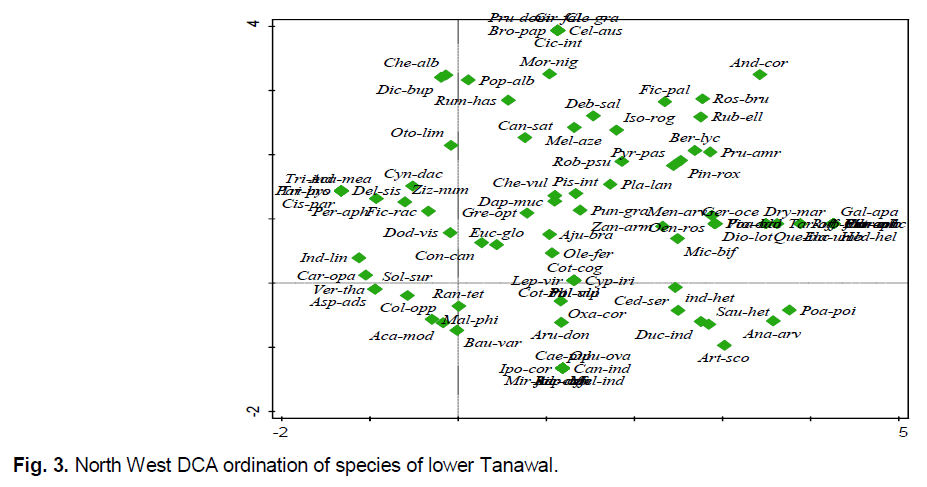
Fig 3. North West DCA ordination of species of lower Tanawal.
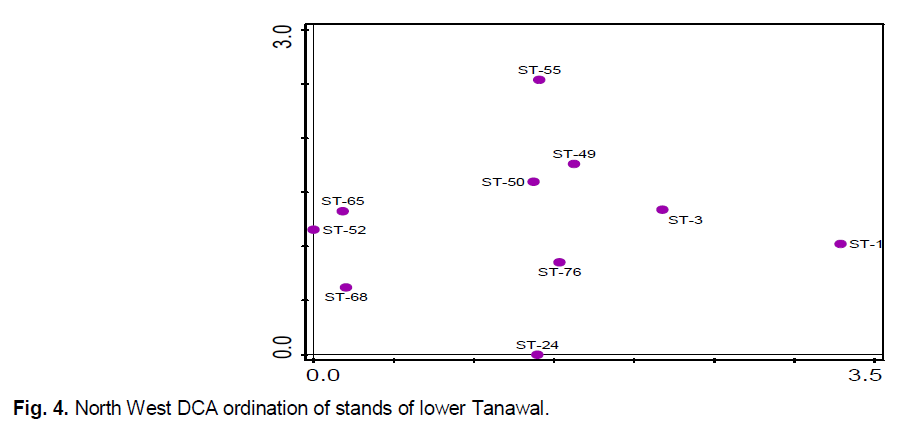
Fig 4. North West DCA ordination of stands of lower Tanawal.
CCA ordination of vegetation of lower Tanawal from North West aspect
The CCA ordination indicated that the maximum Eigenvalue for axis 1 (0.53) followed by axis 02 (0.42) and for axis 03 (0.38) and 04 (0.37). The explained variation for axis 1, 2, 3 and 4 were 18.49, 33.20, 46.38 and 59.18 individually. The pseudo-canonical correlation for axis 1, 2, 3 and 4 were 1.0, 1.0, 1.0 and 1.0 respectively.
The CCA ordination shown that Cynodoan dactylon, Ziziphus nummularia, Dodonaea viscosa and Eucalyptus globulus showed positive correlation with heat index and temperature, while have negative correlation with slope angle.
Poa poiformis, Anagallis arvensis, shown positive correlation with electrical conductivity and negative correlation with dew point and chillness. Morus nigra, Punica granatum, Rumux hastaus and Pistacia integerrima shown positive correlation with wet bulb, phosphorus, chillness, potassium, dew point and altitude while negative correlation with electrical conductivity. Pinus roxburghii, Andrachne cordifolia, Isodon rugusos, Rosa brunonii and Taraxacum officinale were positively correlated with wind speed, humidity, slope angle and organic matter (Fig. 5).
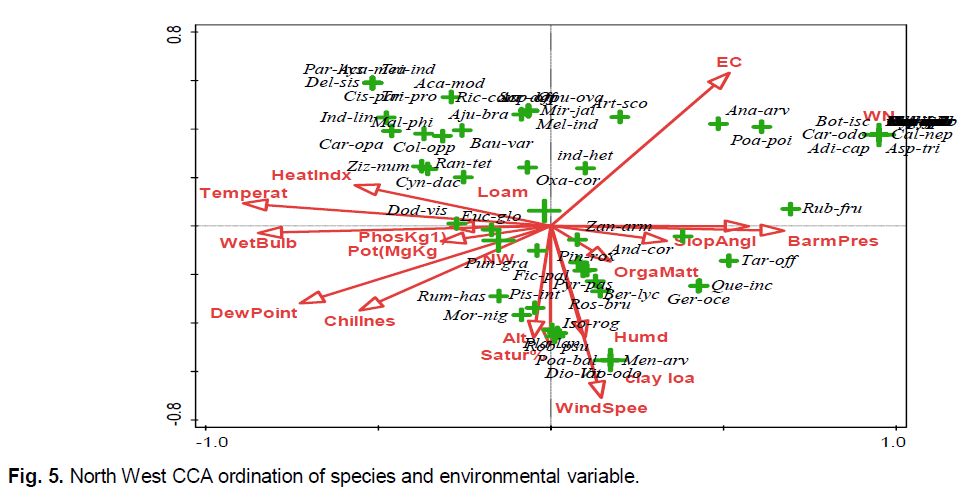
Fig 5. North West CCA ordination of species and environmental variable.
The environmental variables wet bulb, chillness, dew point, phosphorus, saturation potassium, and altitude showed positive correlation with each other and negative correlation with electrical conductivity. Temperature, heat index showed positive correlation with each other and negative correlation with slope angle and humidity. The results of CCA ordination shown that maximum vectors strength was noted for temperature and wind speed. The intermediate vectors strength was noted for heat index, chillness, altitude and barometer pressure. There was less strength of vectors for phosphorus, slope angle, potassium and organic matter (Fig. 6).
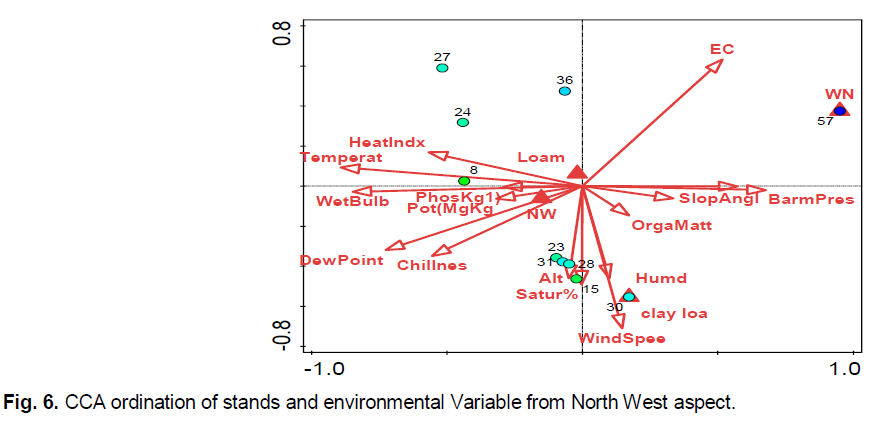
Fig 6. CCA ordination of stands and environmental Variable from North West aspect.
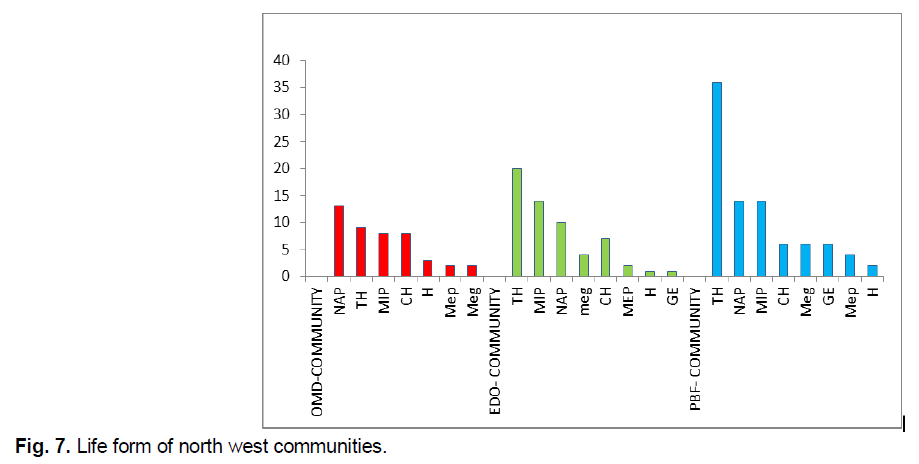
Fig 7. Life form of north west communities.
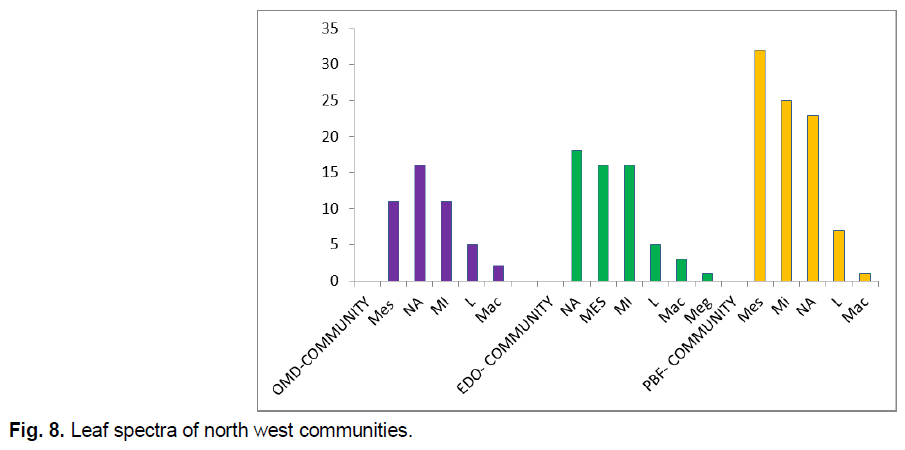
Fig 8. Leaf spectra of north west communities.
Discussion
The North West Detrended correspondence analysis showed the highest gradient length (3.29) was noted for axis 1 with Eigenvalue 0.53. The results of CCA ordination shown that maximum vectors strength was noted for temperature and wind speed. The intermediate vectors strength was noted for heat index, chillness, and altitude and barometer pressure. There was less strength of vectors for phosphorus, slope angle, potassium and organic matter.
Nanophylls were dominant leaf spectra in the study area which indicated low water content making it difficult for roots to absorb moisture and thus resulting the dominance of Nanophyll. Similar findings were reported by (Malik et al. 2013; Amjad et al. 2016; Sultan, et al. 2016). Leaf size classes indicated that some species are sensitive to heat stress and water. Therophytes was dominant life form in the vegetation of North West aspect of Lower Tanawal, which showed the harsh environmental condition and also
anthropogenic pressures on the flora of the area. Our results are also agreed with Ali et al. (2016) who stated that dominant life form was Therophytes from Chail valley, Swat, Pakistan. Ali et al.(2015) also reported therophytes were the dominant life form from Buner Hills, Pakistan. Similarly Sher et al. (2011) described Therophytes were dominant life form from Lahore village District Sawabi, Pakistan. Malik et al. (2007) stated from Ganga Choti and Bedori Hills therophytes were the dominant life form. Khan et al. (2012a) reported Therophytes were the dominant life form. Our findings are agreed with the Farag (2014) that showed biotic pressure effect the vegetation.
Conclusion
It is concluded that at North West aspect 10 stands and 124 species were documented. Six stands were placed in negative groups while four stands were placed in positive group. In division 2 (6) 3 stands were placed in negative group while 3 stands were placed in positive group.Three plant communities Eucalyptus-Dodonaea-Oxalis community, Olea-Melia-Dodonaea community,and Pinus-Berberis-Ficus community were noted. The results of CCA ordination shown that maximum vectors strength was noted for temperature and wind speed. The intermediate vectors strength was noted for heat index, chillness, and altitude and barometer pressure. There was less strength of vectors for phosphorus, slope angle, potassium, and organic matter. Nanophylls were dominant leaf spectra in the study area. Leaf size classes indicated that some species are sensitive to heat stress and water. Therophytes was dominant life form in the vegetation of North West aspect of Lower Tanawal.
References
Amjad, M.S., Arshad, M., Sadaf, H.M., Shahwar, D., Akrim, F., Arshad, A. (2016). Floristic compositon, biological spectrum and conservation status of vegetation in Nikyal valley, Azad Jammu and Kashmir. Asian Pacific Journal of Tropical Disease, 6:63-69.
Ali, A., Badshah, L., Hussain, F., Shinwari, Z.K. (2016). Floristic composition and ecological characteristics of plants of Chail valley, District Swat, Pakistan. Pakistan Journal of Botany, 48:1013-1026.
Ali, S., Parveen, A., Qaiser, M. (2015). Vegetation structure, edaphalogy and ethnobotany of Mahaban and Malka (district Buner) KPK, Pakistan. Pakistan Journal of Botany, 47:15-22.
Bibi, A., Iqbal, Z., Shah, G.M. (2019). Floristic diversity, biological spectrum of Lower Tanawal, KP, Pakistan. Ukrainain Journal of Ecology, 9:505-514.
Dasti, A., Malik, S.A. (1998). A transect of vegetation and soil on the indus valley scarp slope, Pakistan. Pakistan Plant Science, 4:73-84.
Hussain, F., Ilahi, I. (1991). Ecology and Vegetation of Lesser Himalayas Pakistan. Jadoon Printing Press Peshawar.
Farag, El.M. (2014). Floristic Composition and traditional uses of plant species at Wadi Alkuf, Al-Jabal Al-Akhder, Libya. American-Eurasian Journal of Agriculture Environment, 14:685-697.
Hill, M.O. (1979). TWINSPAN: A FORTRAN program for arranging multivariate data in an ordered two-way table by classifcation of the individuals and attributes. Ecology and Systematics, Cornell University, Ithaca, New York.
Hussain, F., Illahi, I. (1991). Ecology and Vegetation of Lesser Himalayan Pakistan. Botany, Department. University of Peshawar, pp:187.
Hill, M.O., Gauch, H.G. (1980). Detrended correspondence analysis: An improved ordination technique. Vegetation, 42:47-58.
Khan, S.M. (2012). Plant communities and vegetation ecosystem services in the Naran valley, Western Himalaya. Department of Biological Sciences, University of Leicester, p:271.
Malik, Z.H., Hussain, F., Malik, N.Z. (2007). Life form and leaf size spectra of plant communities Harbouring Ganga Chotti and Bedori Hills during 1999-2000. International Journal of Agriculture Biology, 9:833-838.
McCune, B. (1986). PC-ORD: an integrated system for multivariate analysis of ecological data. Abstracta Botanica, 10:221-225.
Sher, Z., Hussain, F., Badshah, L., Wahab, M. (2011). Floristic composition, communities and ecological characteristics of weeds of wheat fields of Lahor, district Swabi, Pakistan. Pakistan Journal of Botany, 43:2817-2820.
Sultan-Ud-Din, H.A., Ali, H. (2016). Floristic composition and life form classes of district Shangla, Khyber Pakhtunkhwa, Pakistan. Journal of Biological Environmental Science, 8:187-206.
Ter Braak, C.J.F. (1989). CANOCO-an extension of DECORANA to analyze species-environment relationships. Hydrobiologia, 184:169-170.
Author Info
A. Bibi1*, Z. Iqbal2, G. Mujtaba Shah2 and Z. Jamal22Department of Botany, Government Post Graduate College Abbottabad, Khyber Pakhtunkhwa, Pakistan
Citation: Bibi, A., Iqbal, Z., Mujtaba Shah, G., Jamal, Z. (2021). TWINSPAN classification of vegetation from north west aspect of lower tanawal, Pakistan. Ukrainian Journal of Ecology 11 (9), 49-53.
Received: 08-Oct-2021 Accepted: 13-Nov-2021 Published: 18-Nov-2021
Copyright: This is an open access article distributed under the terms of the Creative Commons Attribution License, which permits unrestricted use, distribution, and reproduction in any medium, provided the original work is properly cited.
